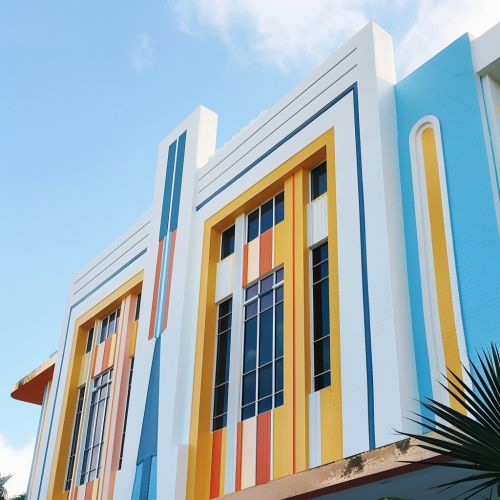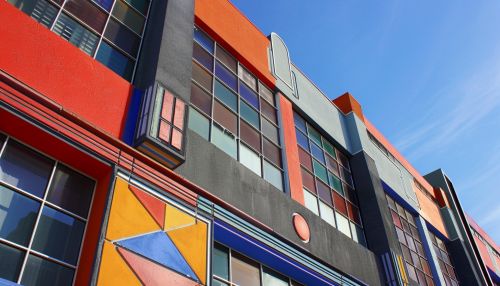Architecture of Los Angeles
Introduction
The architecture of Los Angeles is a rich tapestry that reflects the city's diverse cultural history, innovative spirit, and dynamic growth. From Spanish Colonial Revival to Mid-Century Modern, the architectural landscape of Los Angeles offers a unique blend of styles that have evolved over centuries. This article delves into the various architectural movements, notable structures, and influential architects that have shaped the city.
Historical Overview
Early Influences
The architectural history of Los Angeles begins with the indigenous Tongva people, who built simple, functional structures using natural materials. With the arrival of Spanish missionaries in the late 18th century, Spanish Colonial architecture became prominent. The Mission San Gabriel Arcángel (1771) is a prime example of this style, characterized by adobe walls, red-tile roofs, and arched corridors.
19th Century Developments
The 19th century saw the introduction of Victorian architecture, brought by settlers from the Eastern United States. Notable examples include the Bradbury Building (1893), which features an Italian Renaissance Revival style with a stunning interior atrium and wrought-iron railings.
Architectural Movements
Spanish Colonial Revival
The Spanish Colonial Revival style gained popularity in the early 20th century, inspired by the region's colonial past. Architects like George Washington Smith and Bertram Goodhue were instrumental in popularizing this style, characterized by stucco walls, red-tile roofs, and ornamental ironwork. The El Pueblo de Los Ángeles Historical Monument is a notable example.
Art Deco
The Art Deco movement of the 1920s and 1930s left a significant mark on Los Angeles. Buildings like the Los Angeles City Hall (1928) and the Eastern Columbia Building (1930) showcase the geometric shapes, bold colors, and lavish ornamentation typical of this style.


Mid-Century Modern
The post-World War II era saw the rise of Mid-Century Modern architecture, characterized by clean lines, open floor plans, and integration with nature. Architects like Richard Neutra and John Lautner were pioneers of this movement. The Stahl House (1960) is an iconic example, featuring floor-to-ceiling glass walls and minimalist design.
Contemporary Architecture
Contemporary architecture in Los Angeles is marked by innovation and sustainability. Notable architects like Frank Gehry and Thom Mayne have designed groundbreaking structures such as the Walt Disney Concert Hall (2003) and the Caltrans District 7 Headquarters (2004). These buildings often incorporate advanced materials, sustainable practices, and unique forms.
Notable Structures
Residential Architecture
Los Angeles is home to some of the most iconic residential architecture in the world. The Eames House (1949), designed by Charles and Ray Eames, is a landmark of Mid-Century Modern design. The Gamble House (1908), designed by Greene and Greene, is a masterpiece of the American Arts and Crafts movement.
Commercial and Public Buildings
The Getty Center (1997), designed by Richard Meier, is a sprawling complex that houses an extensive art collection and offers panoramic views of the city. The Los Angeles Central Library (1926), designed by Bertram Goodhue, combines Egyptian and Mediterranean Revival styles.
Skyscrapers
Los Angeles boasts a skyline dotted with impressive skyscrapers. The U.S. Bank Tower (1989), designed by Henry N. Cobb, was the tallest building in the city until the completion of the Wilshire Grand Center (2017), designed by AC Martin Partners. These structures reflect the city's growth and economic power.
Influential Architects
Frank Lloyd Wright
Frank Lloyd Wright's contributions to Los Angeles architecture include the Hollyhock House (1921) and the Ennis House (1924). These structures showcase his unique approach to integrating architecture with the natural environment.
Richard Neutra
Richard Neutra was a key figure in the development of Mid-Century Modern architecture. His designs, such as the Kaufmann House (1946) in Palm Springs, emphasize simplicity, functionality, and a strong connection to the surrounding landscape.
Frank Gehry
Frank Gehry is renowned for his innovative and often controversial designs. The Walt Disney Concert Hall is one of his most famous works, featuring a striking, deconstructivist design with sweeping curves and reflective surfaces.
Preservation and Challenges
The preservation of historic buildings in Los Angeles is a complex issue, given the city's rapid growth and development pressures. Organizations like the Los Angeles Conservancy work to protect and restore significant structures. However, challenges such as funding, zoning laws, and property rights often complicate these efforts.
See Also
- Mission Revival architecture
- California bungalow
- Deconstructivism
- Sustainable architecture
- Adaptive reuse
